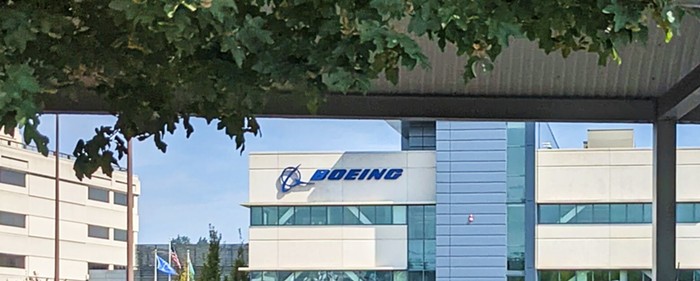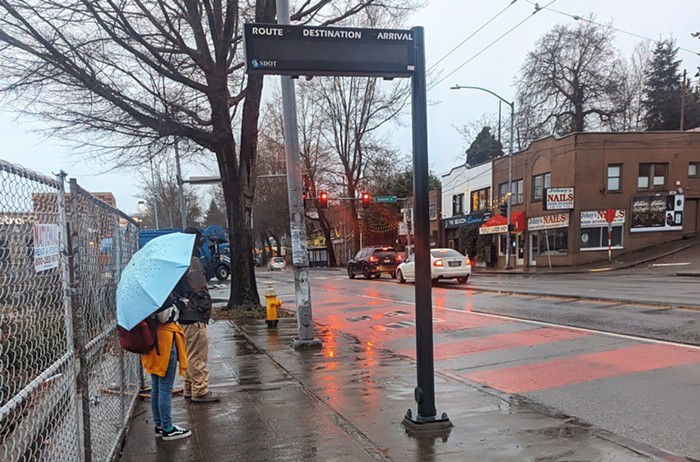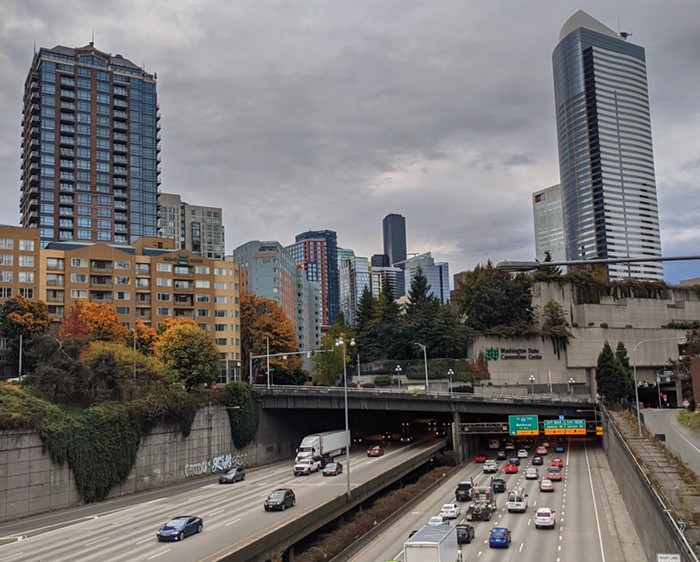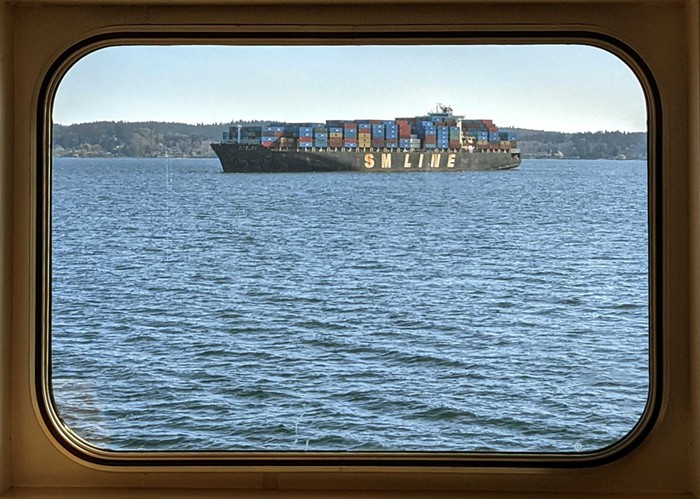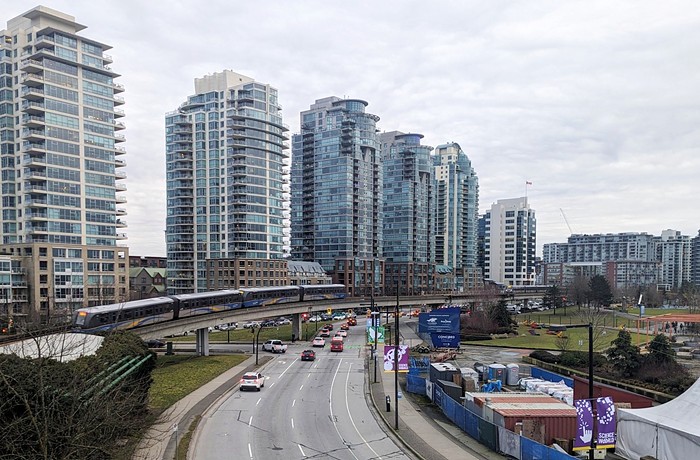
The bad news is there are no solutions to the "Seattle Squeeze" that are car-friendly. The closure of the Alaskan Way Viaduct, which is now a month away, presents us with a limit, not an obstacle. Nothing ordinary can be done about the former; one has to completely rethink the problem. The latter presents a challenge that can be, with some effort, overcome while preserving the state of things. Many of our leaders want us to believe that the Seattle Squeeze is just an obstacle. It will not change anything. All that's required are few adjustments to the current state of things. But this is wishful thinking. Traffic is already bad. And this is with around 90,000 vehicles using the viaduct everyday. The redirection of these cars into an existing transportation crisis finally presents the city with a hard limit.
The mayor hopes an app will do the trick. Other leaders think adding a few more buses will be enough. Some are recommending people work from home. These proposals only reveal one thing: There is no way to solve this problem in an ordinary manner. And it's highly doubtful that the opening of the tunnel will clear this mess. We are, at present, stuck here.
The MASS coalition has the right idea. The Seattle Squeeze is actually an opportunity to initiate radical and, ultimately, long-term transportation solutions that finally break the city's almost universal dependence on cars.
MASS:
MASS has just announced a shortlist of priorities that it believes Seattle must adopt for 2019 as the foundation of any adequate response to the traffic crunch that begins with the closure of the Alaskan Way Viaduct on January 11. During the ensuing, multi-year “period of maximum constraint,” a perfect storm of construction projects is expected to make downtown gridlock even worse and impact traffic flow throughout the city. The coalition worries that the city is not just unprepared, but missing a unique opportunity to move rapidly to a carbon-neutral, safe, and equitable transportation system that can keep pace with the city’s growth.
The key point is made by Katie Wilson, whose organization, Transit Union, is a part of the MASS coalition. She states that we’re "never going to escape from this congestion quagmire until we make it far more convenient for people to walk, bike, and ride transit.” The infrastructure for these alternative and more efficient forms of transportation is grossly underdeveloped. Car infrastructure is, of course, obscenely overdeveloped. The Seattle Squeeze is nothing but an expression of this terrific imbalance.
I want to conclude with notes on two concepts, one from economics and the other from philosophy. One concerns the nature of demand, and the other, the nature of reason. These concepts will, I think, provide a clearing for rethinking (or thinking against) the transportation crisis.
Now, in economics there is an idea called Say's law. It states that "supply creates its own demand." This concept has been promoted by the right for over 200 years. It essentially justifies supply-side economics. Much of the history of the left in economics has been devoted to attacking this law. But it is still with us today, in one form or another. However, it must be noted that when it comes to public transportation, the law can explain why, with the exception of Seattle, mass transit ridership is in decline in the majority of US cities. Because Say's law theorizes the inducement/creation of demand, it can help predict the success or failure of the parts or whole of a public transportation system or project (the same goes for automobile projects, but more on that in a moment).
What do I mean by this? Take, for example, Link. At around 9 pm, the time between trains grows considerably. The thinking at Sound Transit is that there are less riders and therefore, there should be a corresponding reduction in the number of trains on the line. But this thinking, if considered closely, is logically weak, as it only confirms (and thereby reinforces) the state of things. It does not attempt to change the situation. It maintains and even cements it. But it is probable that if trains ran more frequently at night, this would break the mold and induce demand.
As for forms reasoning (or rationality), they do not have one source but many. From the very beginning, it has been the task of philosophy to determine what can be called the 'nature of this and that' form of reasoning. Indeed, the Jesus of philosophy was condemned to death (by poison) because he could not stop testing, checking, questioning the forms of reasoning that prevailed in his society. But what philosophy understands is that reasoning must come from somewhere. Sometimes it emerges from below, or from within, or outside of the current state of society. If one has this in mind, they will see that much of the reasoning that informs traffic engineering has little to do with the crisis of transportation as a whole but, specifically, the crisis of car mobility.
Tweets the urban planner Jeff Speck:
Traffic engineering theory is straightforward: a street is congested because the number of drivers exceeds its capacity. If you enlarge the street, you will eliminate congestion. Unfortunately, 75 years of evidence tells us that this almost never happens. Instead, what happens is that the number of drivers quickly increases to match the increased capacity, and congestion returns in full force.
This contradiction is called 'induced demand,' which has as its opposite the contradiction of public transportation in the form of Say's law. The structure of the current dominant reasoning in traffic engineering only worsens the transportation crisis because it can only conclude to solve the crisis by expanding what precisely caused the crisis. It also worsens the state of a situation by overdeveloping the infrastructure of one mode of transportation and underdeveloping others.
I am now tweeting from Rule 27. Understand Induced Demand
Acknowledge that more lanes means more traffic.
From #WalkableCityRules (1/3) https://t.co/zL1o8CC0o3
— Jeff Speck (@JeffSpeckAICP) December 12, 2018
A reasoning that's outside of the state things can prove to be much higher and closer to the truth of the matter. For example, it sounds silly to make public transportation free in Seattle. But we only think it so because we are still tied to a lower form of reasoning that has been thoroughly conditioned by car ideology. A higher reasoning sees that using public transportation or walking or biking is actually (when the state of the crisis is properly considered) a service that a citizen provides the city. Cars can only take from the city. They give it nothing but headache after headache. This is why cars have to be heavily subsidized by governments. They contribute nothing but expenses at all levels. Where as pedestrians or bikers or transit riders are providing the city with positive externalities: healthier bodies, cleaner air, fewer medical emergencies, and less emotional stress. Indeed, in a truly rational world (the highest form of reasoning as regards transportation), they would be rewarded with tax breaks.


